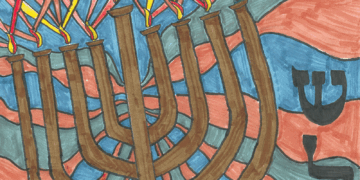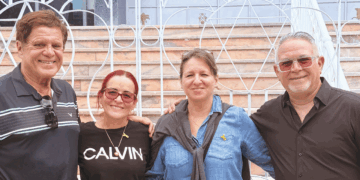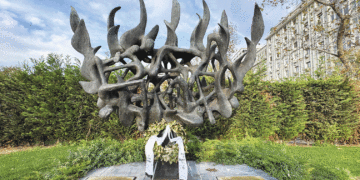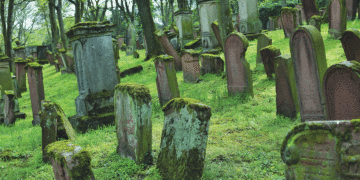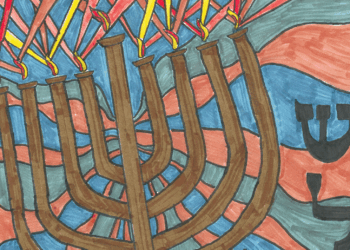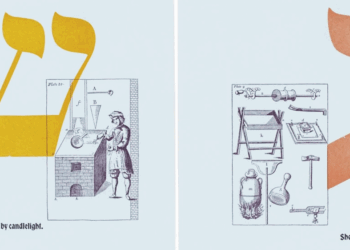The first volume of The Hebrew Bible: A Critical Edition is due out later this year
By ANTHONY WEISS
LOS ANGELES (JTA) — According to Jewish tradition, the Torah is so sacred that even a single error made on a single letter renders the entire scroll unfit for use.
And yet the Hebrew Bible — including the Torah, its first five books — is riddled with corruptions and alterations that have accrued and been passed down over the millennia.
Now an international team of scholars is working to fix all that.
For the past 14 years, the team behind The Hebrew Bible: A Critical Edition has been laboring on a project to sift through the text and reverse the accumulated imperfections and changes, returning the books of the Hebrew Bible to something like their original versions. The first volume is due out later this year.
“It is a little chutzpadik,” acknowledged Ronald Hendel, HBCE’s general editor and a professor of Hebrew Bible at the University of California, Berkeley.
It’s also a messy, painstaking and controversial endeavor that has been criticized by some of the world’s leading biblical scholars. The critics argue that what Hendel and his team are attempting to do is misleading, counterproductive or flat-out impossible.
“I think it will actually end up causing more problems,” said Michael Segal, a senior lecturer in Bible at the Hebrew University of Jerusalem.
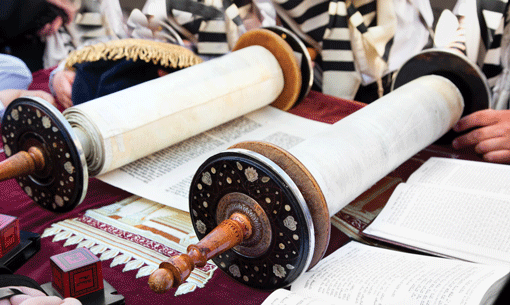
The difficulties in the project stem from the Bible’s long history of transmission from scribe to scribe through the centuries. HBCE is trying to reverse engineer that process, to sift through the various extant texts of the Bible and — by analyzing grammatical glitches, stylistic hitches and contradictions of the texts — establish a reading closer to if not the original, then at least the archetype on which the subsequent copies were based.
The goal is to rewind the clock as far as possible toward the time when the various biblical texts attained their canonical form, around the start of the Common Era.
The text of the Hebrew Bible now being used descends from what is called the Masoretic text, which was assembled between the sixth and 10th centuries by Jewish scribes and scholars in present-day Israel and Iraq. But even among the various versions of the Masoretic text there are subtle differences.
Many of today’s printings of the Hebrew Bible come from the Second Rabbinic Bible, a text assembled in 16th-century Venice. The Jewish Publication Society uses the Leningrad Codex, which at approximately 1,000 years old is the oldest complete surviving text. Still others use the 10th-century Aleppo Codex, which the Torah scholar Maimonides praised for its accuracy but has been missing much of the Torah since a 1947 fire.
Contemporary scholars seeking to understand the history of the Hebrew Bible’s text utilize a range of other sources, including ancient Greek and Syriac translations, quotations from rabbinic manuscripts, the Samaritan Pentateuch and others. Many of these are older than the Masoretic text and often contradict it, in ways small and large.
Some of the errors are natural outgrowths of the process of scribal transmission — essentially typos in which the scribe mistook one letter for another, skipped a word or transposed words. In other cases the scribes may have changed the text intentionally to make it more comprehensible or pious.
The level of variation differs from book to book. Hendel estimates that it ranges from approximately 5 percent in Genesis to some 20-30 percent in books such as Samuel and Jeremiah. While many changes are small, others are more substantial.
Just before Cain slays Abel, the Masoretic text announces that Cain speaks but offers no dialogue. Both the Samaritan Pentateuch and the ancient Greek translation called the Septuagint supply the missing speech: “Let us go out to the field.” In this instance, emending the text is relatively straightforward.
But elsewhere the task becomes complicated. The book of Jeremiah in the Septuagint is approximately 15-20 percent shorter than the version in the Masoretic text, and the text appears in a different order. In this case, editors are not just dealing with glitches but with entirely different versions of the same text.
The scholars behind The Hebrew Bible: A Critical Edition argue that textual scholars now have enough evidence at their disposal to make reasonable judgments about where the text has been corrupted, why and how to fix it thanks in large part to the discovery and publication of the Dead Sea Scrolls.
These ancient manuscripts, though largely fragmentary, are by far the oldest Hebrew copies of the Bible, and they gave scholars a key by which to judge the accuracy of the subsequent texts.
“The Dead Sea Scrolls have created a new era in the study of textual history of the Hebrew Bible,” Hendel said. “The kind of thing that we’re doing couldn’t have been done even 15 to 20 years ago because the field wasn’t really ripe.”
Hendel’s team uses a two-fold approach: In the case of the more limited variations, they make the correction in the text according to their best judgment while noting the variants and the reasoning in the accompanying notes. Where entirely separate versions seem to exist, as in Jeremiah, HBCE will reproduce both side by side, indicating multiple editions.
The effort is now bearing fruit as the Society of Biblical Literature is preparing this fall to publish the first HBCE volume, Proverbs, edited by Michael Fox, an emeritus professor at the University of Wisconsin–Madison. Hendel hopes the project will continue to print a new volume every year or two.
(Up until a few months ago, the project was slated for printing by Oxford University Press and was known as the Oxford Hebrew Bible. Hendel said the project and Oxford parted ways over the scope of an electronic edition. Oxford did not return a call seeking comment.)
There have been various previous attempts to produce a single, corrected text of the Bible dating back for over a century. All have foundered due to the inherent difficulty in peering back through the centuries.
Instead, the preferred method has been to produce what is known in the field as a “diplomatic edition” — that is, a reprint of some version of the Masoretic text accompanied by notes listing possible variants and corrections that one could make to the text.
In fact, there are two such scholarly biblical projects currently taking place.
One, the Hebrew University Bible Project, was established in 1956 to assemble every known textual variant of the Hebrew Bible. Unlike HBCE, the project is designed to assemble variations, not to choose one that is correct. Massively comprehensive and aimed largely at high-level scholars, the HUBP has published only three volumes in its more than half-century of existence — Isaiah, Jeremiah and Ezekiel. A fourth, of the 12 minor prophets, is slated for publication this fall.
At the same time, the German Bible Society is producing the Biblia Hebraica Quinta, its fifth version of a diplomatic Hebrew Bible, with the first published in 1906. Intended as a more accessible, single-volume text, it strikes a middle ground, indicating preferred readings but without altering the text itself. The project has published 10 of the Hebrew Bible’s 24 books.
Criticisms of the HCBE effort fall into two very broad categories.
The first main critique is primarily practical: Is it in fact possible to accurately reconstruct the biblical text after so many centuries, through so many linguistic layers and with so much uncertainty?
“The more years I’ve been involved in the study of the history of the biblical text, the less confident I am in deciding what is more original or not,” said the Hebrew University’s Segal, the Hebrew University Bible Project’s general editor.
To this, the editors of HBCE respond that errors and uncertainty are inherent in any of the biblical texts one could print and thus unavoidable.
“Everyone knows that no manuscript is without error,” said Eugene Ulrich, a professor at Notre Dame University and a co-editor of two volumes of HBCE. “You could ask, Why do you want to print a text in which you know there are errors?”
But there is also a second, more fundamental critique of HBCE — namely, can such a thing as an original truly be said to exist? Was there ever a moment when the biblical text crystallized into a single version, or has it simply continued to evolve?
In other words, by chasing what the field of textual study calls an ur-text, the scholars of HBCE may, in fact, be chasing a ghost. Critics of HBCE argue that in creating a single text, the series will create the fiction of unity where there has always been multiplicity.
Hendel argues that what he and his team are presenting is not meant to be a definitive text but simply the most definitive that one can achieve. And he says he is not put off by the criticism.
“There’s a lot of pushback in the field. A lot of people think that this is still premature, or just unthinkable,” Hendel said. “But that’s OK, I live in California. We can do new things.”


